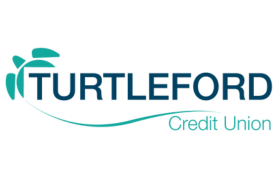Getting around doesn’t come cheap these days. When you borrow money to purchase a car, you’ll be handed a set of keys — and a sizable monthly payment. It might have you wondering what the components of this payment are and how the payment is calculated.
So many questions, and we’ve got answers!
Here, we break down the parts of a car loan payment, explain how monthly payments are calculated and offer tips for effectively managing your payments.
What are the components of a car payment?
- Principal
The principal is the amount of money you borrow to purchase the car. For example, if you are buying a car that’s priced at $35,000, and you put $5,000 as a down payment, the principal of your loan is $30,000.
A portion of each monthly payment will go toward paying down the principal balance of your loan. The more you pay toward the principal each month, the sooner you’ll pay off your loan.
- Interest
Interest is the cost of borrowing money from a lender. It’s calculated as a percentage of the principal amount and is added to your monthly car payment. The interest rate on your loan will depend on factors like your credit score, the length of the loan term and the current market conditions.
- Loan term
While this is not a component of the loan, you will likely see this referenced on your monthly statement or loan bill. The loan term is the length of time you have for repaying the loan, typically expressed in months. Common auto loan terms range from 36 to 72 months, with some loans extending even longer. The loan term directly affects the size of your monthly car payment. The longer the term is, the lower the monthly payments will be.
However, longer terms also mean paying more in interest over the life of the loan.
If you’ve rolled additional costs into the loan, they may also be part of your monthly payment. This can include:
- Taxes and fees
If you choose to finance taxes, registration fees or other upfront costs of the loan, these will be included in your loan amount and will slightly increase your monthly payment. However, these costs are not itemized separately; instead, they’ll be incorporated into the principal.
- Add-ons
Optional add-ons like extended warranties, gap insurance and any other products that you choose to finance will also be included in your loan principal, thus increasing your monthly payment.
Additional costs of car ownership
While not included in your monthly loan payment, these expenses are an inherent part of owning a car:
- Insurance. Lenders typically require you to carry comprehensive and collision coverage as part of your financing agreement, ensuring that the car is protected in case of an accident. Insurance premiums are determined by factors, like the car’s value, your driving record and your location. It’s important to shop around for the best rates and include insurance within your overall calculation of monthly car expenses.
- Maintenance. Your car will need regular maintenance and upkeep, which you’ll need to include in your budget.
- Fuel or electricity. Of course, you won’t be able to drive a car without using and paying for gas, or springing for the electricity if needed to power it.
How are car loan payments calculated?
When you finance a car, your lender will calculate your monthly payment using these factors:
- The current price of the car
- Any trade-in value you have from a previous car
- Any cash you put as a down payment
- The principal loan amount
- The interest rate on the loan
- The inclusion of warranties and other add-ons
- The loan term, which is number of months it will take you to pay off the loan
To calculate your monthly payment, the lender will take the principal of the loan, the cost of any add-ons and the interest amount due on this amount, and divide this number by the months in your loan term. This is the amount you’ll need to pay each month.
Want to see how much your payment would be? Plug in your numbers in this handy loan calculator.
Managing your car payment
Managing your car payment effectively requires careful planning and budgeting. Here are a few tips to help you stay on top of your payments and minimize the overall cost of your car loan:
- Consider a larger down payment. If possible, make a larger down payment to reduce the amount you need to finance. This will lower your monthly payments and reduce the total interest paid. It can be worthwhile to push off your car purchase by a few months if it means paying more toward the down payment.
- Choose a shorter loan term. While longer loan terms have lower monthly payments, they also result in higher interest costs. If you can afford it, opt for a shorter loan term to save money in the long run.
Are you ready to close the deal on a new car? Turtleford Credit Union auto loans offer great terms, easy eligibility requirements for qualifying members and a quick application process. Call, click or stop by today to learn more.
This content is intended for general information and discussion purposes only. It does not constitute financial, legal, or professional advice. Readers should seek independent guidance from a qualified professional to ensure decisions are appropriate to their personal situation when applicable.



